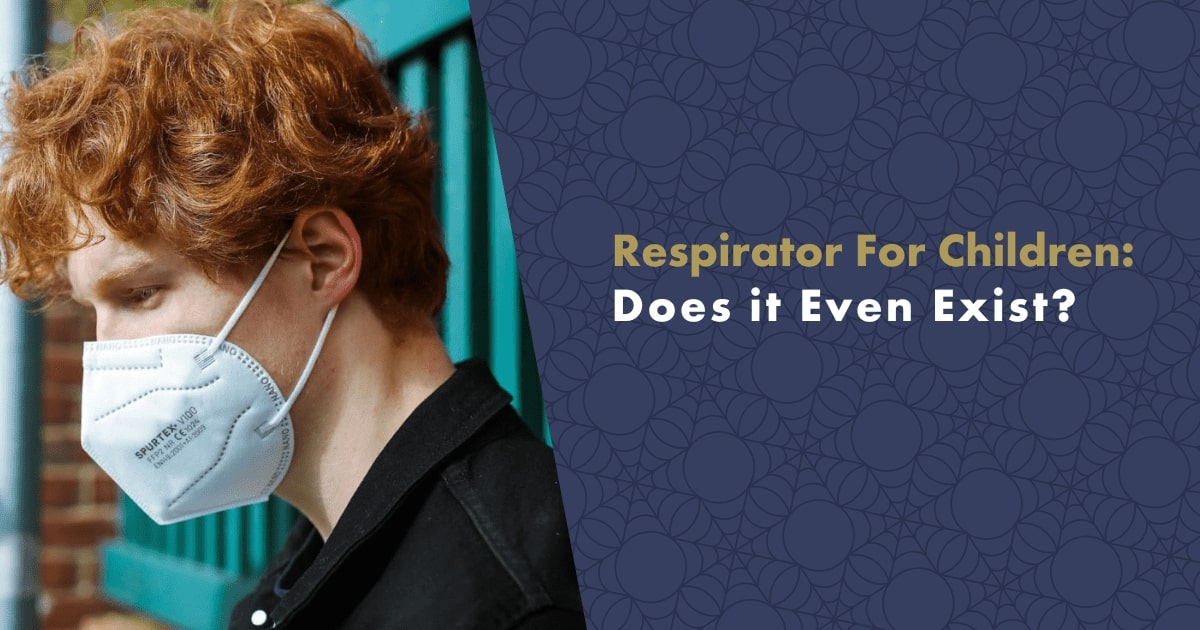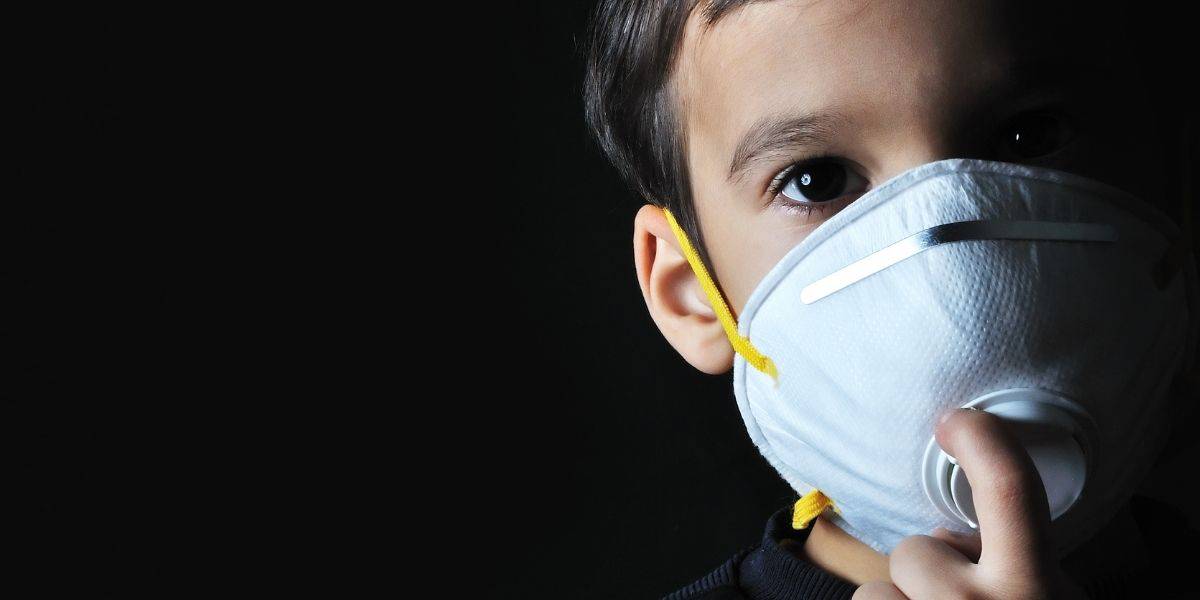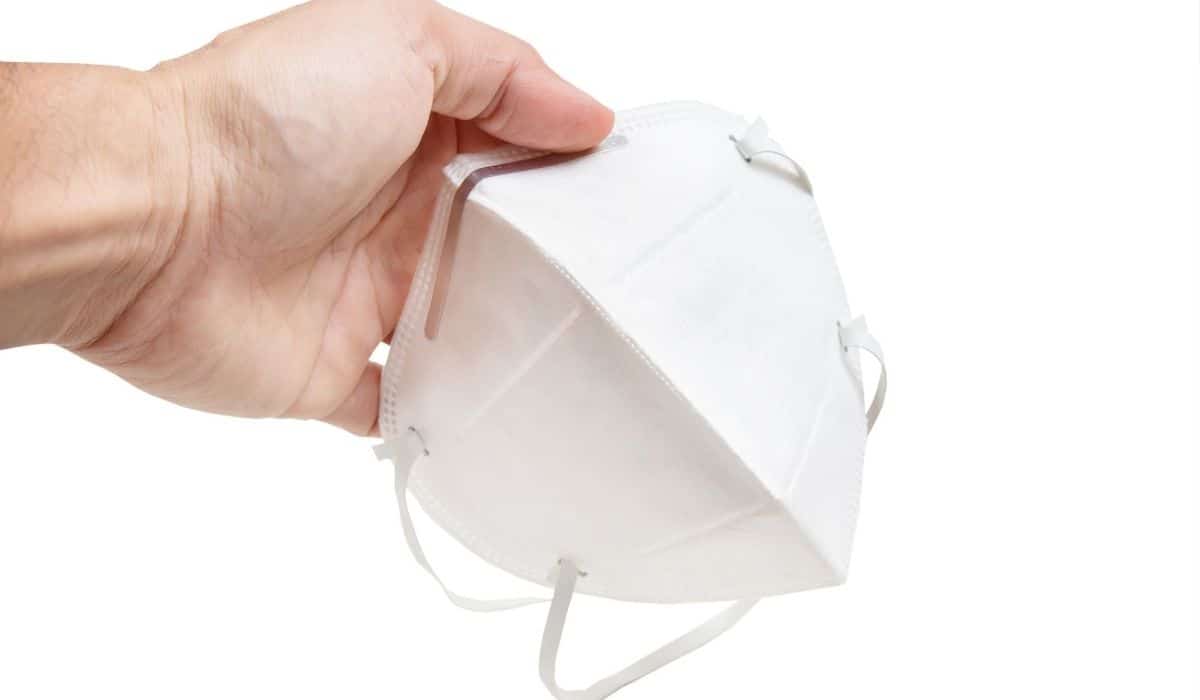In order to properly understand the entire situation surrounding FFP2 face masks, you must realize one very important thing. Although today we wear face masks to protect ourselves from the Covid-19 disease, they are still primarily protective work equipment for a demanding (industrial) environment.
And since child labor is prohibited in the EU, no one expected that these face masks would ever be used by children. For this reason, there is no standard for children's face masks. This means that even children's face masks with a proper FFP2/FFP3 certificate should not be on the market.

The Vital Role of FFP2 or FFP3 Face Mask Fit in Protecting Against COVID-19
The problem lies primarily in the size and shape of the face masks. All it takes is a small leak in the contact face line and the effectiveness of the protection drops significantly. If the face mask is to fulfill its purpose, it must fit perfectly on the face.
The universal size of face masks is far from suitable for everyone. Even by tightening rubber bands, tying strings or adjustable straps, you often do not achieve a perfect result. People with a smaller or, on the contrary, a larger face, will most likely find the universal face mask to stand out. Fortunately, many manufacturers already offer different sizes of face masks, which are labeled S, M and L.
Unfortunately, even the smallest size face masks are not suitable for children's faces.
Part of the certification of face masks according to the European standard EN 149:2001+A1:2009 is also a fit test. In it, a real person puts on a face mask and in a laboratory environment it is tested whether air flows around the protective device due to a leak on the face. The standard allows a maximum air bypass (the so-called fit factor) of two percent for an FFP2 class face mask and one percent for an FFP3 class face mask.
It is necessary to add that the fit test is always performed on adults. No one tests the fit factor on children, which is again based on the lack of a children's standard for face masks.
A child's face is not only smaller. It also has different proportions than an adult's face, so wearing face masks is generally not recommended for children. To protect children from the coronavirus, it is better to choose, for example, a well-fitting nano mask from a proven manufacturer.

Protecting Our Children: Why KN95 Face Masks are Not Safe for Kids
The demand for children's face masks leads some companies to engage in fraudulent behavior. Mainly two situations often occur.
- Manufacturer shrinks its certified face mask and starts selling it as a children's face mask.
- The seller offers customers smaller KN95 face masks from China which it passes off as children's face masks.
In both cases, this is apparently a fraud that can endanger the health of your children.
Chinese KN95 face masks are smaller and shaped a little differently, than face masks made and certified in Europe, to fit Asian faces better. However, these are definitely not children's face masks.
Huge differences are also in the tested filtration. European face masks are tested according to industry standard EN 149:2001+A1:2009. For example, experts in the laboratories are investigating how the face mask copes with the capture of fine dolomite dust, pollen and miniature paraffin droplets. Currently, the mandatory protection class FFP2 must capture at least 94% particles with a median size of 0.6 micrometers.

Not Up to Standard: Why KN95 Face Masks are Not Welcome in the European Union
On the other hand, the Chinese standard GB 2626, which leads to the KN95 designation, does not deal with the paraffin filtration test at all. They also achieved poor results in other filtration efficiency tests, and therefore would not meet the European standard EN 149:2001+A1:2009.
Chinese KN95 face masks are completely unsuitable as a prevention of Covid-19 infection. And not only for children, but also for adults. In addition, Chinese face masks are not even allowed to be sold in european country without european certification.
How to Know if Your Face Mask Meets European FFP2 Standards
As we have already stated several times, a face mask is not a completely suitable protective device for children under 15 years of age. However, if you want to buy a quality face mask from EU, it must have imprinted:
- name face mask
- the valid standard according to which the face mask was certified (EN 149:2001+A1:2009)
- protection class (FFP2, FFP3)
- mark R (Reusable) or NR (Disposable)
- the CE mark along with a four-digit indicating the accredited testing body that issued the relevant EU certificate
Beware of Chinese face masks with falsified certification.
Nano Face Mask as an Effective Protection of Children against the Coronavirus
A regular face mask only protects your surroundings, and besides, it loses its effectiveness after just a few minutes of wearing it. Children's face masks are not manufactured. So how to ensure children effective protection against the coronavirus?
If you decide on a nano mask, you will definitely not go wrong. The protective membrane consists of a dense network of nanofibers that works on the principle of mechanical barrier. The gaps between the fibers are so small that even a virus cannot get through them. Thanks to this, the nano face mask captures up to 99.9% of bacteria and viruses in both directions. In addition, the nano material has very good breathability, which children will appreciate, for example, when sitting at school for several hours.
Nano masks are produced in several sizes to fit children and adults perfectly. Children's sizes usually fit children in the first grade of primary schools better. Teenage children often wear smaller nano masks for adults.
The Main Advantages of Nano Masks Compared to Medical Masks:
- The membrane works on the principle of mechanical barrier and captures up to 99.9% of bacteria and viruses
- Does not lose effectiveness when wet
- Protects the wearer from viruses and bacteria
- It is easier to breathe in a nano mask because the material is more breathable
- It does not pass allergens, therefore it is also suitable for allergy sufferers
#produkty#https://www.nanospace.store/face-masks-for-kids/
Resources
- Ullah, S., Ullah, A., Lee, J., Jeong, Y., Hashmi, M., Zhu, C., Joo, K.I., Cha, H.J. and Kim, I.S., 2020. Reusability comparison of melt-blown vs nanofiber face mask filters for use in the coronavirus pandemic. ACS Applied nano materials, 3(7), pp.7231-7241.
- Damokhi, A., Yousefinejad, S., Fakherpour, A. and Jahangiri, M., 2022. Improvement of performance and function in respiratory protection equipment using nanomaterials. Journal of Nanoparticle Research, 24(4), p.76.
- Suen, L.K.P., Guo, Y.P., Ho, S.S., Au-Yeung, C.H. and Lam, S.C., 2020. Comparing mask fit and usability of traditional and nanofibre N95 filtering facepiece respirators before and after nursing procedures. Journal of Hospital Infection, 104(3), pp.336-343.
- Skaria, S.D. and Smaldone, G.C., 2014. Respiratory source control using surgical masks with nanofiber media. Annals of occupational hygiene, 58(6), pp.771-781.
- Abbasinia, M., Karimie, S., Haghighat, M. and Mohammadfam, I., 2018. Application of nanomaterials in personal respiratory protection equipment: a literature review. Safety, 4(4), p.47.
- Tcharkhtchi, A., Abbasnezhad, N., Seydani, M.Z., Zirak, N., Farzaneh, S. and Shirinbayan, M., 2021. An overview of filtration efficiency through the masks: Mechanisms of the aerosols penetration. Bioactive materials, 6(1), pp.106-122.
- Akduman, C. and Akcakoca Kumbasar, E.P., 2018, December. Nanofibers in face masks and respirators to provide better protection. In IOP conference series: Materials science and engineering (Vol. 460, p. 012013). IOP Publishing.
- Naragund, V.S. and Panda, P.K., 2022. Electrospun nanofiber-based respiratory face masks—A review. Emergent materials, 5(2), pp.261-278.
- Zhang, Z., Ji, D., He, H. and Ramakrishna, S., 2021. Electrospun ultrafine fibers for advanced face masks. Materials Science and Engineering: R: Reports, 143, p.100594.
- Seidi, F., Deng, C., Zhong, Y., Liu, Y., Huang, Y., Li, C. and Xiao, H., 2021. Functionalized masks: powerful materials against COVID‐19 and future pandemics. Small, 17(42), p.2102453.
